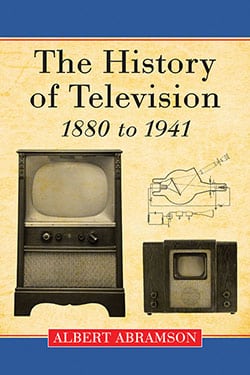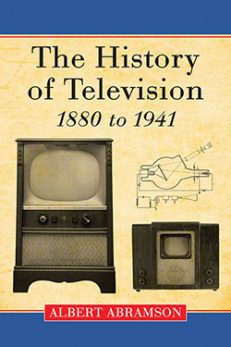The History of Television, 1880 to 1941
$49.95
In stock
About the Book
No other technological innovation can be cited whose impact on the fabric of daily living has been as pervasive as that of television. A sole inventor does not exist; television came about through the remarkable interactions of several hundred scientists.
Interviews with these scientists, extensive archival research worldwide, and rare photos make this book—and its following volume—the one definitive history and the only authoritative account. Herein are the early inventions, the first devices, early camera tubes, the mechanical era, the kinescope, the iconoscope, and more. There are very extensive references.
About the Author(s)
Bibliographic Details
Albert Abramson
Format: softcover (6 x 9)
Pages: 368
Bibliographic Info: 50 photos, glossary, bibliography, index
Copyright Date: 2009 [1987]
pISBN: 978-0-7864-4086-3
Imprint: McFarland
Table of Contents
Acknowledgments vii
Foreword (by Dr. Albert Rose) xi
Introduction xiii
1. Archaeology and Prehistory of Television: 1671–1879 1
2. Early Schemes and Inventions: 1880–1899 10
3. The First Devices: 1900–1911 23
4. “Distant Electric Vision”: 1911–1920 38
5. The Early Camera Tubes: 1921–1924 51
6. The Mechanical Era Begins: 1925–1927 73
7. The Introduction of the Kinescope: 1928–1929 108
8. Back to the Laboratory: 1930–1932 147
9. The Iconoscope: 1933–1935 193
10. The London Television Service: 1936–1939 226
11. The First NTSC: 1940–1941 257
Notes 273
Bibliography 327
Glossary of Terms 331
Index 339
Book Reviews & Awards
“a massive quantity of research”—Library Journal; “voluminous documentation”—Choice; “an important book…[a] definitive history of the medium to World War II”—Communication Booknotes Quarterly.





